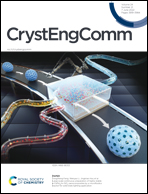A study to discover novel pharmaceutical cocrystals of pelubiprofen with a machine learning approach compared†
Abstract
Pelubiprofen (PF), a biopharmaceutical classification system (BCS) class II non-steroidal anti-inflammatory drug, has been on the market only in its crystalline form. To discover the first cocrystal form(s) of the drug, artificial neural network (ANN) modeling and the pKa rule were adopted to predict the most probable coformers that could form cocrystals with PF. Among candidate molecules examined theoretically and experimentally, isonicotinamide (INA) and nicotinamide (NCA) formed PF-based cocrystals through evaporative crystallization. The structures of the PF–INA and PF–NCA cocrystals were verified through multiple characterization techniques, including single-crystal X-ray diffraction. These two cocrystals demonstrated remarkably better water solubility and dissolution behaviors than did pure PF in both acidic and neutral solutions. Even with deficiency in the prediction capability, the combination of machine learning-based and knowledge-based coformer screening and the subsequent synthetic experiments would be a potential approach for discovering novel pharmaceutical cocrystals in the future.

- This article is part of the themed collections: Machine Learning and Artificial Intelligence: A cross-journal collection and Data Driven Crystal Engineering


 Please wait while we load your content...
Please wait while we load your content...